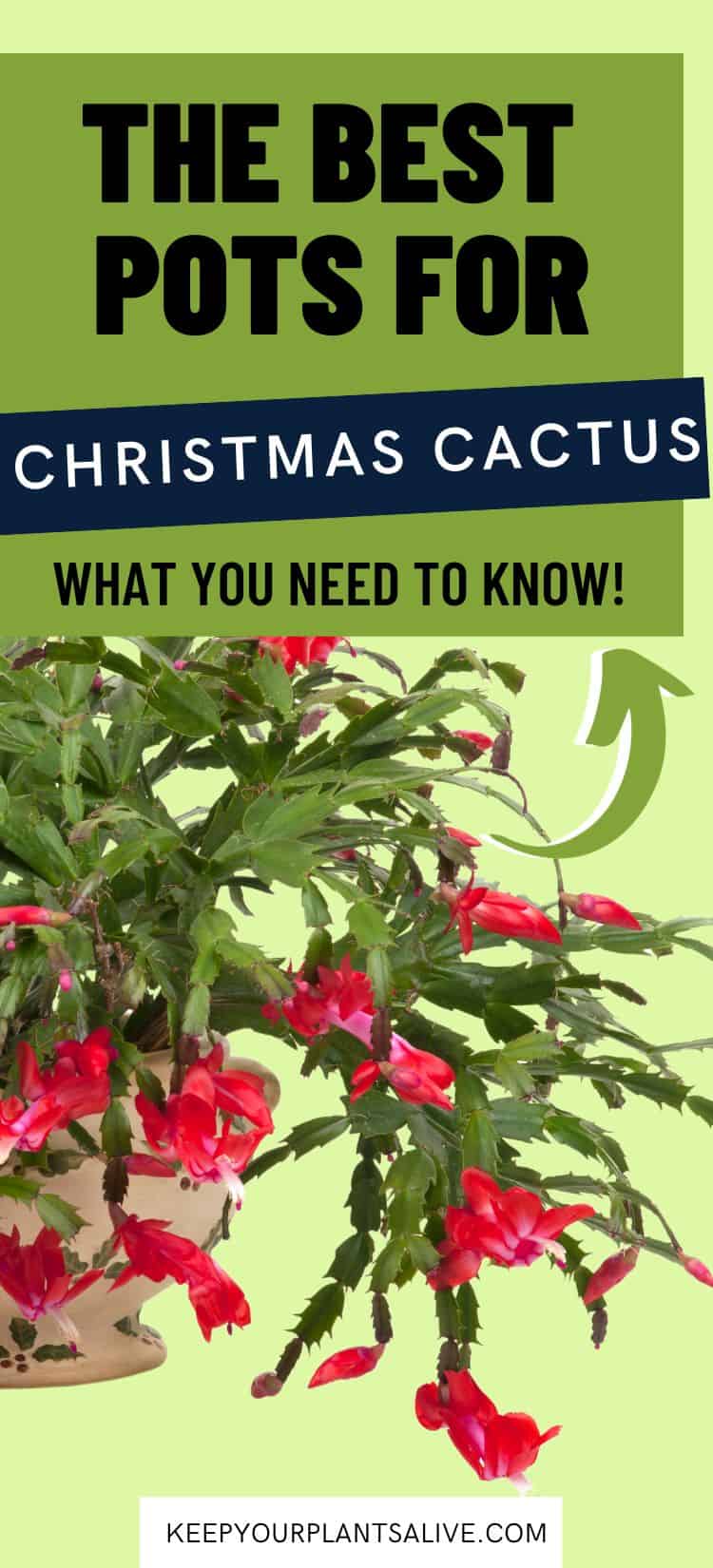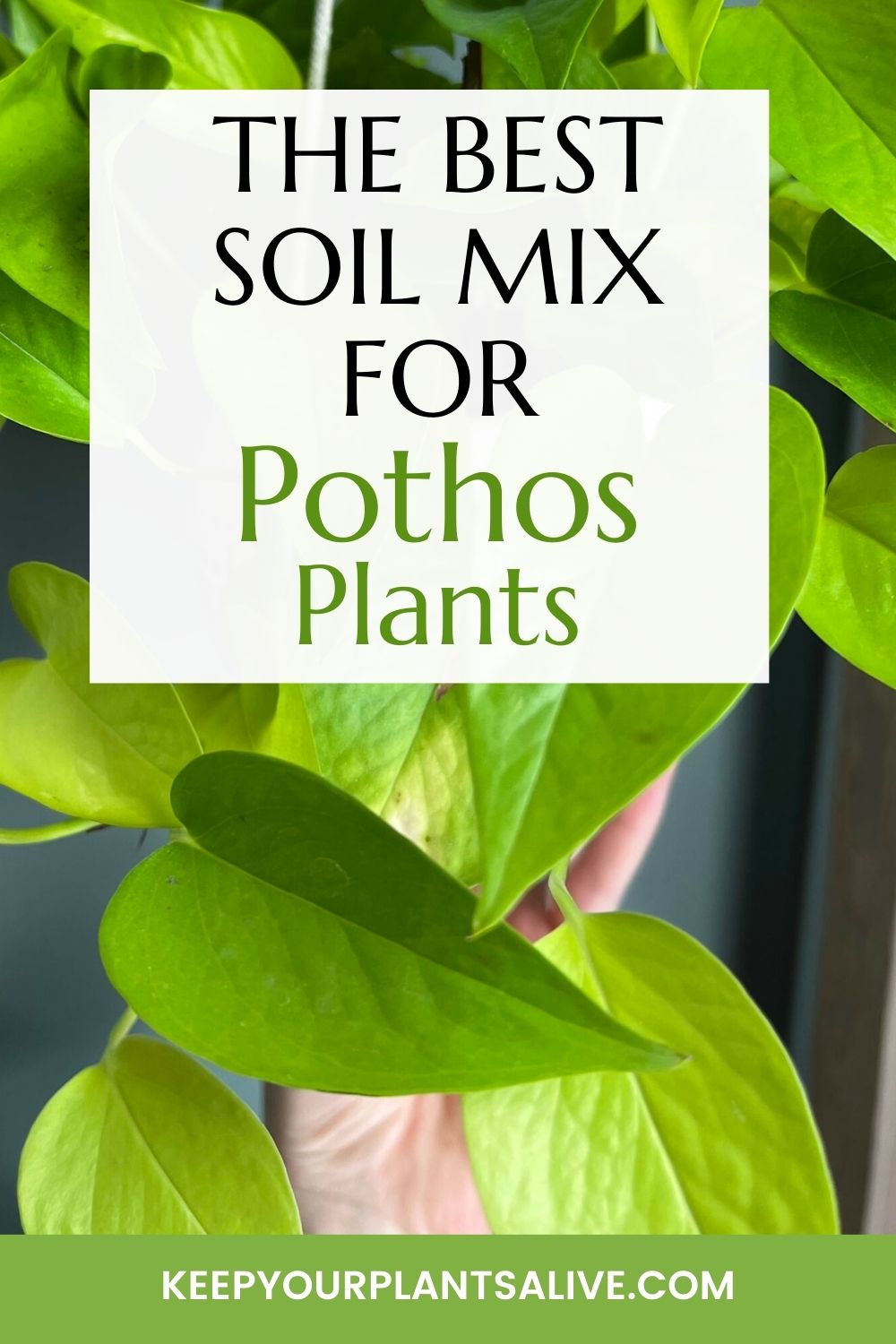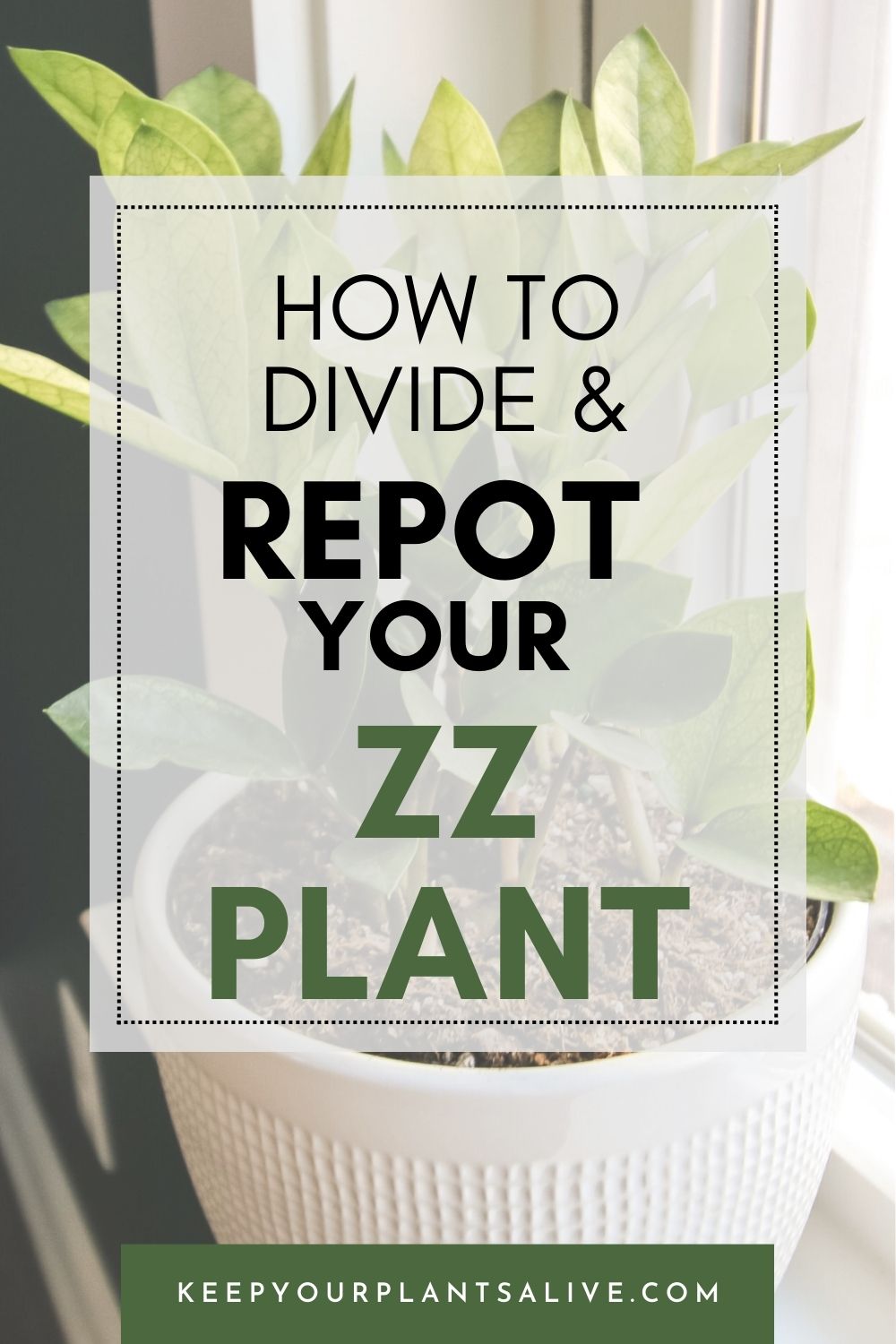Want to grow houseplants in a vase or jar? Here's what to know - and the best plants that can grow in water!
There are many ways to grow a garden - raised beds, in-ground, in pots, and yes, in water.
Growing plants in water might seem strange, but it can be a fun experiment and can even have long term success with the right conditions and the right plant selection.
Growing plants in water is low maintenance, less messy than soil, and can result in some really creative displays.
Today I want to dive into the benefits of growing plants in water and the best plants that you might choose from if you decide that you want to add indoor water plants to your home!
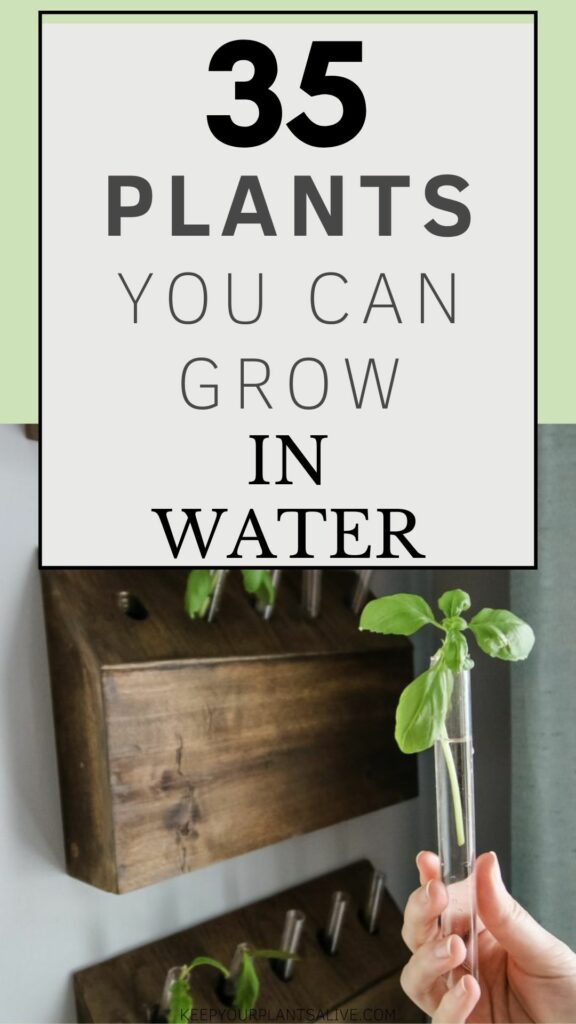
Should You Grow Plants in Water?
Plants generally need water, light, and nutrients to grow and thrive. Nowhere in that list does it say that they need soil.
Most people use soil, since plants often grow in the dirt outside, but there are many plants that can be grown in water without soil.
In fact, some people think that it's easier to grow plants in water. If you struggle remembering to water your plants, for example, you might like them directly in a glass jar of water!
For that reason, this method is great for travelers and busy people.
You also might propagate your plants in water and then decide to just leave them there permanently.
If you love plants, I think that growing them in water is at least a fun method to experiment with!
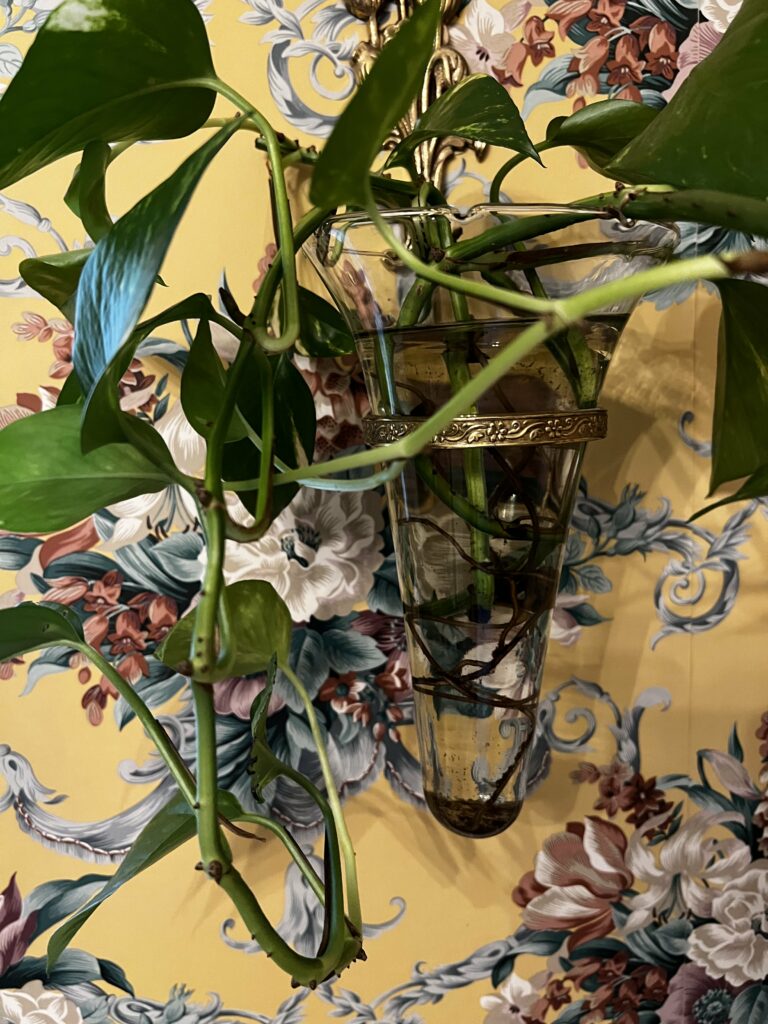
How to Grow Plants in Water
You can grow either cuttings or fully mature plants in water. It's typically easiest to start with cuttings with leaf nodes, let them root in water, and then just never move them to soil.
Of course, you can also move mature plants to water, you will just need to take some time to clean the roots so that the water doesn't get muddy and gross.
What's the best container to grow plants in water in?
You can grow plants in water in glass bottles, jars, drinking glasses, test tubes, propagation stations, wall vessels, bulbs, or vases.
Clear glass containers allow you to best watch the roots grow, but clear containers are also the most likely to grow algae.
Darker or non-transparent containers will block out some of the light and slow down algae growth!
How to maintain water quality and prevent algae growth
Algae can make your plants water gross. Some tips to cut down on algae growth include:
- Use a fertilizer without phosphorous
- Don't let the water get too much light
- Change the water regularly, especially if it starts looking foggy
- Choose an opaque or dark colored container for your plants
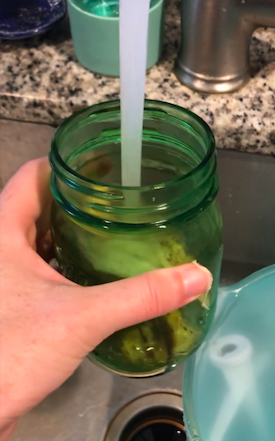
Water Quality and Light Requirements
Growing plants in water does have some water and lighting requirements.
Water requirements for growing plants
Tap water is fine for most plants, unless you have low quality well water or reverse osmosis water.
I personally have a rain barrel and try to use rainwater for my plants whenever possible.
If you want to dechlorinate your water, let it sit out in a bowl or pitcher for 24 hours.
Lighting requirements for plants growing in water
Ideally, water-grown plants will need bright, indirect light conditions. Some might grow with less light, but they will grow much slower.
Direct sunlight or too much light overall can overheat the water and lead to algae growth.
Also be sure to avoid drafty areas as most plants do not like super hot or cold air being blown on them.
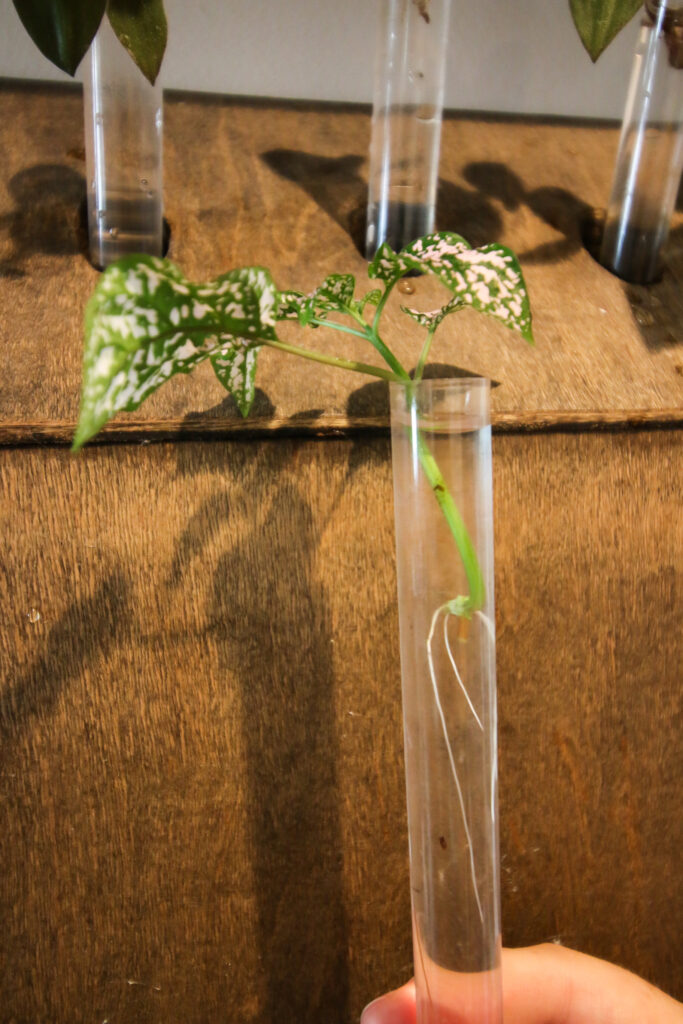
Fertilizing Plants in Water
One of the biggest concerns of growing plants in water without any soil is getting nutrients to your plants.
Water-grown plants typically need the same nutrients as plants growing in the soil, but they won't be able to pull them from the soil.
For that reason, it is important to fertilize your plants growing in water. Usually, people use a hydroponic fertilizer for plants growing in water.
Always follow the instructions on the packaging for your specific fertilizer, but a typical fertilization schedule for a plant growing in water is to fertilize it once a month.
It's easy to remember to do this when you change or dump the water.
Here are some popular hydroponic fertilizers:
- Ounce of Hope - 100% Pure Fish Poop Concentrated Plant Food
- Humboldts Secret Base A & B Bundle
- Bloom Booster and Yield Enhancer for Plants
- General Hydroponics FloraGro 2-1-6
- Miracle-Gro AeroGarden Liquid Plant Fertilizer
- AeroGarden Liquid Nutrients
The Best Plants to Grow in Water
Here are a ton of plants that grow in water without soil!
| Common Name | Latin Name | Toxicity | Light Requirements | Specific Care Needs |
|---|---|---|---|---|
| Lucky Bamboo | Dracaena sanderiana | Non-toxic | Low to moderate | Change water every 2 weeks, avoid direct sunlight. |
| Pothos | Epipremnum aureum | Toxic to pets | Low to bright indirect light | Change water every 2-4 weeks, trim leggy growth. |
| Spider Plant | Chlorophytum comosum | Non-toxic | Bright, indirect light | Keep water chlorinated, occasional feeding. |
| Philodendron | Philodendron spp. | Toxic to pets | Low to bright indirect light | Change water every 2-4 weeks, support vining. |
| Peace Lily | Spathiphyllum spp. | Toxic to pets | Low to moderate light | Change water weekly, wipe leaves. |
| Chinese Evergreen | Aglaonema spp. | Toxic to pets | Low to moderate light | Change water every 2-4 weeks. |
| African Violet | Saintpaulia spp. | Non-toxic | Bright, indirect light | Use a self-watering pot, avoid wetting leaves. |
Lucky Bamboo (Dracaena sanderiana)
Toxicity: Non-toxic
Light Requirements: Low to moderate indirect light
Lucky Bamboo features straight, slender stalks with glossy, lance-shaped leaves. It's known for bringing good luck and is easy to care for, requiring occasional water changes and protection from direct sunlight.
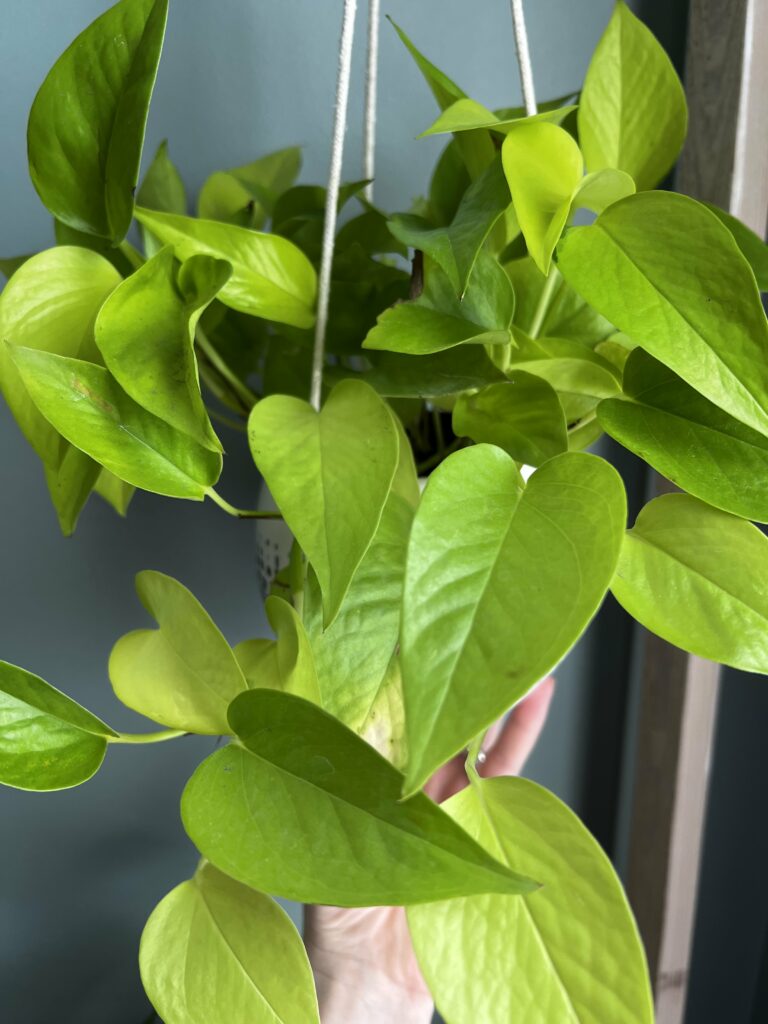
Pothos (Epipremnum aureum)
Toxicity: Toxic to pets
Light Requirements: Low to bright indirect light
Pothos displays heart-shaped, variegated leaves on trailing vines. Keep its water fresh, and trim leggy growth to maintain a lush appearance.
Spider Plant (Chlorophytum comosum)
Toxicity: Non-toxic
Light Requirements: Bright, indirect light
Spider Plants have arching, green leaves with white stripes. These easy-care plants are excellent air purifiers. Avoid overwatering and maintain well-drained roots.
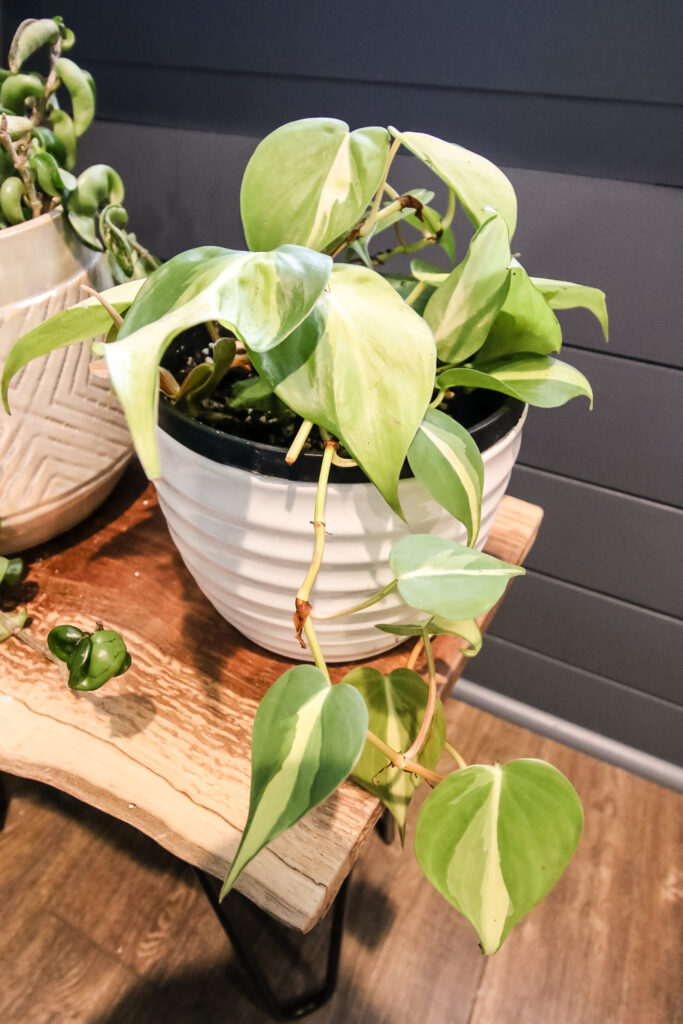
Philodendron (Philodendron spp.)
Toxicity: Toxic to pets
Light Requirements: Low to bright indirect light
Philodendrons have glossy, heart-shaped leaves on vining stems. Support their vines as they grow, and change the water every 2-4 weeks.
Peace Lily (Spathiphyllum spp.)
Toxicity: Toxic to pets
Light Requirements: Low to moderate indirect light
Peace Lilies boast elegant, lance-shaped leaves and occasional white blooms. Keep their water fresh, wipe their leaves, and avoid direct sunlight.

Chinese Evergreen (Aglaonema spp.)
Toxicity: Toxic to pets
Light Requirements: Low to moderate indirect light
Chinese Evergreens have attractive, variegated foliage in shades of green, silver, and red. Change the water every 2-4 weeks.
African Violet (Saintpaulia spp.)
Toxicity: Non-toxic
Light Requirements: Bright, indirect light
African Violets feature fuzzy, violet, pink, or white flowers and deep green, fuzzy leaves. Use a self-watering pot and avoid wetting the leaves.
English Ivy (Hedera helix)
Toxicity: Toxic to pets
Light Requirements: Moderate to bright indirect light
English Ivy has trailing vines covered in small, lobed leaves. Ensure it gets enough humidity and prune to control its growth.
Arrowhead Plant (Syngonium podophyllum)
Toxicity: Toxic to pets
Light Requirements: Low to bright indirect light
Arrowhead Plants have arrow-shaped leaves that change from pink to green as they mature. Keep them away from drafts and change water regularly.
Begonia (Begonia spp.)
Toxicity: Toxic to pets
Light Requirements: Bright, indirect light
Begonias offer colorful foliage and delicate flowers. Provide consistent humidity and avoid overwatering.
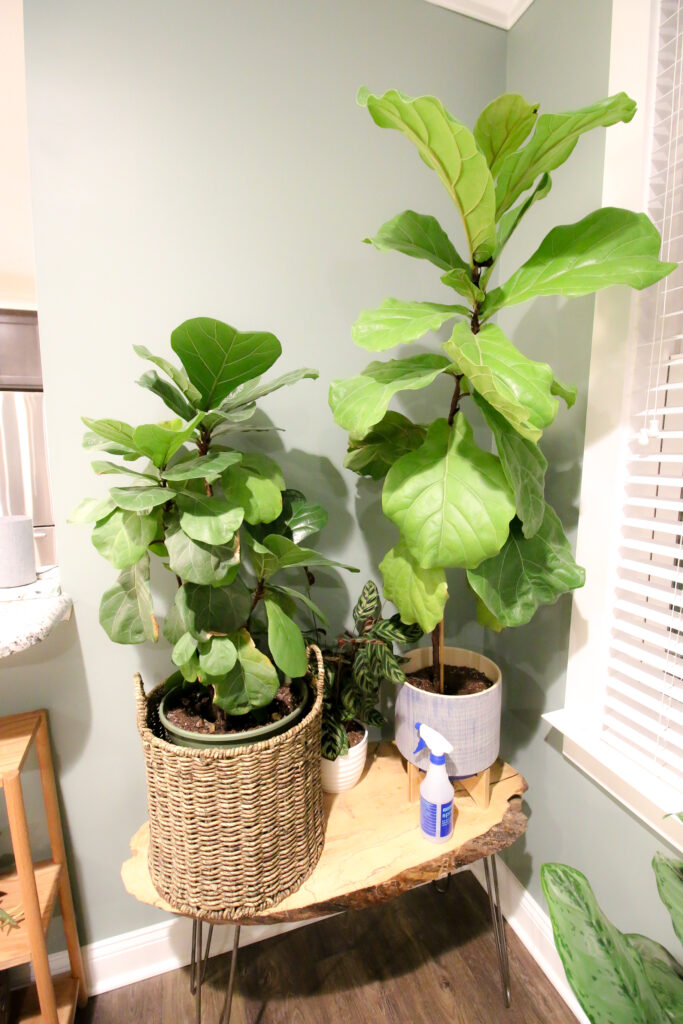
Fiddle Leaf Fig (Ficus lyrata)
Toxicity: Toxic to pets
Light Requirements: Bright, indirect light
Fiddle Leaf Figs have large, violin-shaped leaves. They require well-draining soil and occasional misting.
Coleus (Plectranthus scutellarioides)
Toxicity: Toxic to pets
Light Requirements: Bright, indirect light
Coleus features vibrant, patterned leaves. Pinch back flower spikes to encourage bushier growth.
Bamboo Palm (Chamaedorea seifrizii)
Toxicity: Non-toxic
Light Requirements: Moderate to bright indirect light
Bamboo Palms have feathery, palm-like fronds. Maintain adequate humidity and provide consistent moisture.
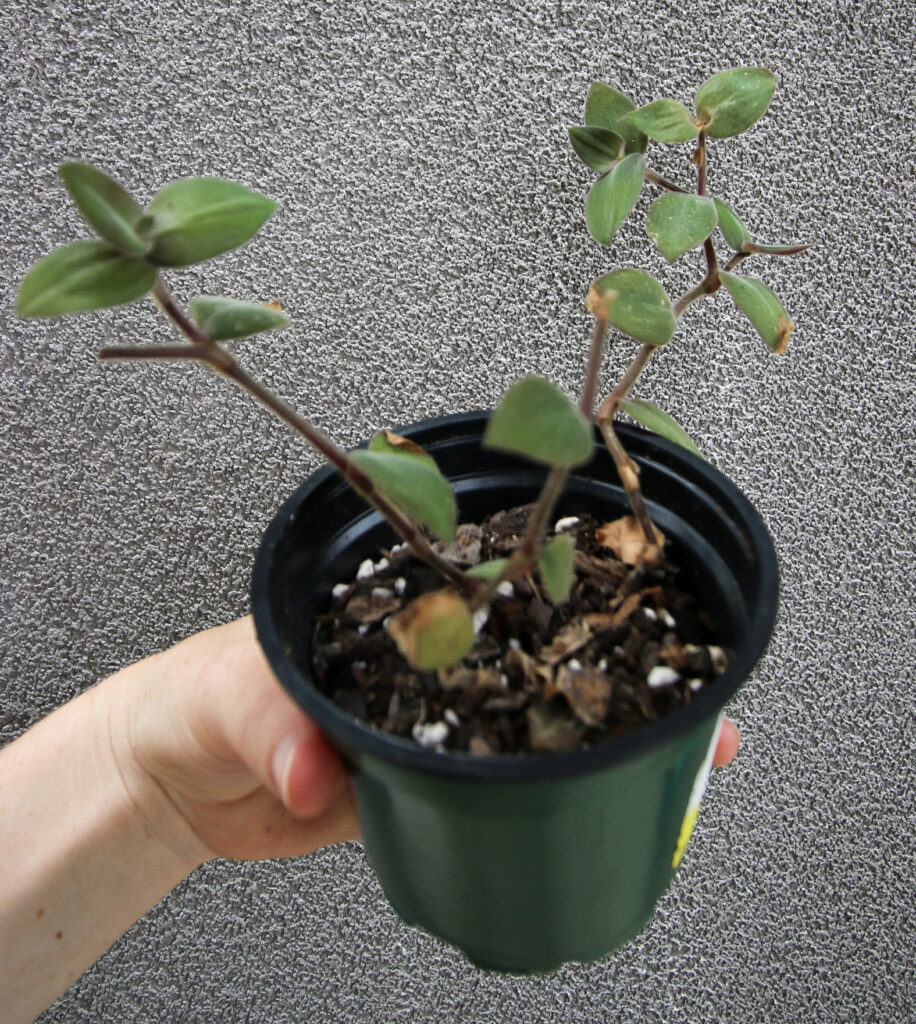
Tradescantia (Tradescantia spp.)
Toxicity: Toxic to pets
Light Requirements: Bright, indirect light
Tradescantia displays colorful, trailing foliage. Pinch back to promote bushier growth and change water regularly.
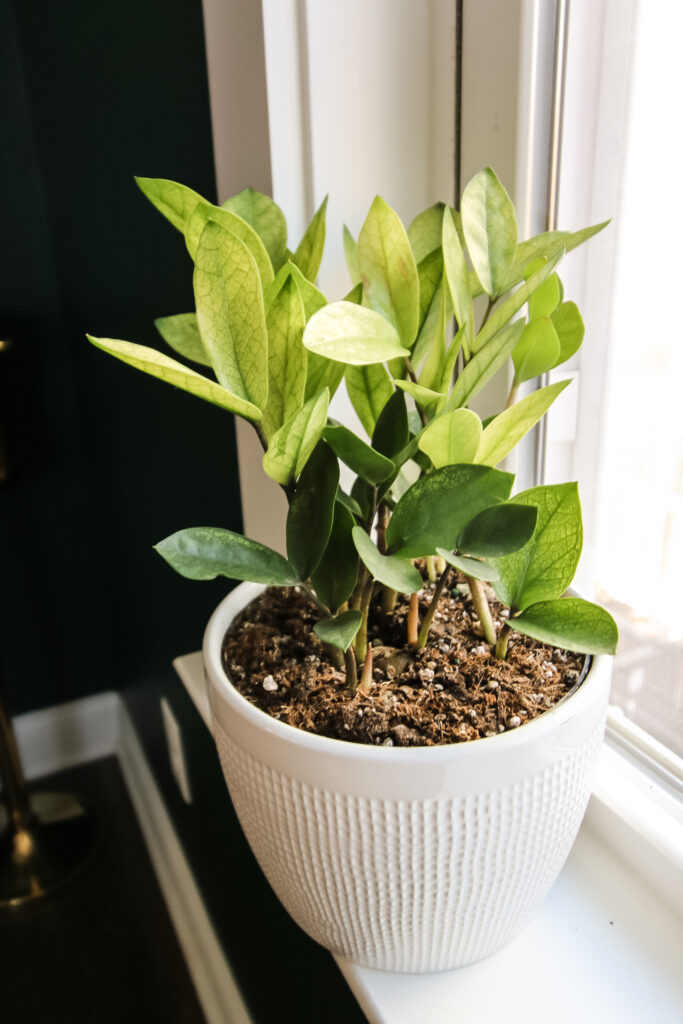
ZZ Plant (Zamioculcas zamiifolia)
Toxicity: Toxic to pets
Light Requirements: Low to moderate indirect light
ZZ Plants have glossy, dark green leaves with a unique architectural appearance. They tolerate low light conditions and prefer slightly dry soil.
Fittonia (Fittonia spp.)
Toxicity: Non-toxic
Light Requirements: Bright, indirect light
Fittonia features intricate, veined leaves in various shades. Maintain consistent moisture levels and high humidity.

Monstera (Monstera deliciosa)
Toxicity: Toxic to pets
Light Requirements: Bright, indirect light
Monstera is known for its Swiss cheese-like leaves. Provide support for its climbing vines and avoid overwatering.
Alocasia (Alocasia spp.)
Toxicity: Toxic to pets
Light Requirements: Bright, indirect light
Alocasias have large, arrow-shaped leaves with unique patterns. Keep the soil consistently moist, but not soggy.
Nerve Plant (Fittonia albivenis)
Toxicity: Non-toxic
Light Requirements: Bright, indirect light
Nerve Plants have strikingly veined leaves in shades of pink, red, and green. Maintain high humidity levels and even moisture.
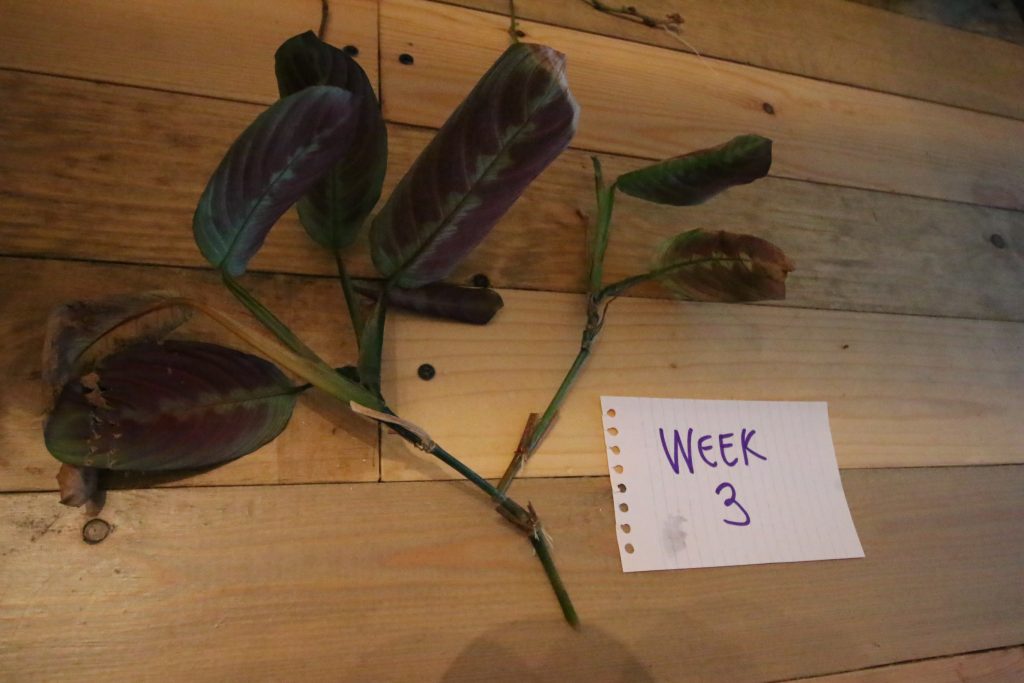
Maranta (Maranta leuconeura)
Toxicity: Non-toxic
Light Requirements: Bright, indirect light
Maranta, also known as the Prayer Plant, has lush green leaves with vibrant red veins. Water regularly and maintain humidity.
Water Hyacinth (Eichhornia crassipes)
Toxicity: Non-toxic
Light Requirements: Bright, indirect light
Water Hyacinths have glossy, round leaves and delicate lavender flowers. These aquatic plants naturally float on water.
Water Lettuce (Pistia stratiotes)
Toxicity: Non-toxic
Light Requirements: Bright, indirect light
Water Lettuce features rosettes of velvety, light green leaves that float on water. An excellent choice for water gardens.
Lemongrass (Cymbopogon citratus)
Toxicity: Non-toxic
Light Requirements: Bright, indirect light
Lemongrass has fragrant, slender leaves with a lemony scent. It thrives in water and can be used for culinary purposes.
Baby's Tears (Soleirolia soleirolii)
Toxicity: Non-toxic
Light Requirements: Bright, indirect light
Baby's Tears form a lush, cascading mat of tiny, round leaves. Keep the water level constant to prevent wilting.
Lavender (Lavandula spp.)
Toxicity: Non-toxic
Light Requirements: Bright, indirect light
Lavender offers aromatic, gray-green foliage and fragrant purple flowers. Grow it in water for a fresh, soothing scent.
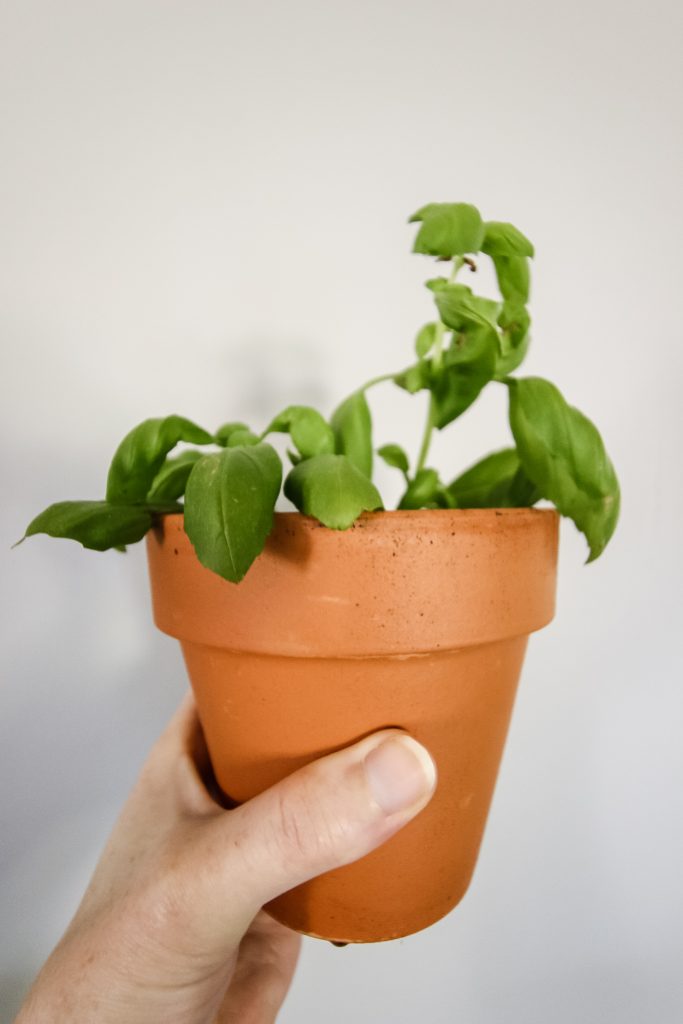
Basil (Ocimum basilicum)
Toxicity: Non-toxic
Light Requirements: Bright, indirect light
Basil features fragrant, green leaves often used in cooking. Change the water regularly to ensure the best flavor.
Chives (Allium schoenoprasum)
Toxicity: Non-toxic
Light Requirements: Bright, indirect light
Chives produce slender, onion-flavored leaves. Grow them in water for easy access to fresh herbs.
Mint (Mentha spp.)
Toxicity: Non-toxic
Light Requirements: Bright, indirect light
Mint yields aromatic, serrated leaves perfect for teas and recipes. Trim regularly to encourage bushy growth.
Lemon Balm (Melissa officinalis)
Toxicity: Non-toxic
Light Requirements: Bright, indirect light
Lemon Balm offers fragrant, lemon-scented leaves. Grow it in water for a delightful citrus aroma.
Oregano (Origanum vulgare)
Toxicity: Non-toxic
Light Requirements: Bright, indirect light
Oregano provides aromatic, oval leaves often used in Italian cuisine. Change the water for optimal flavor.
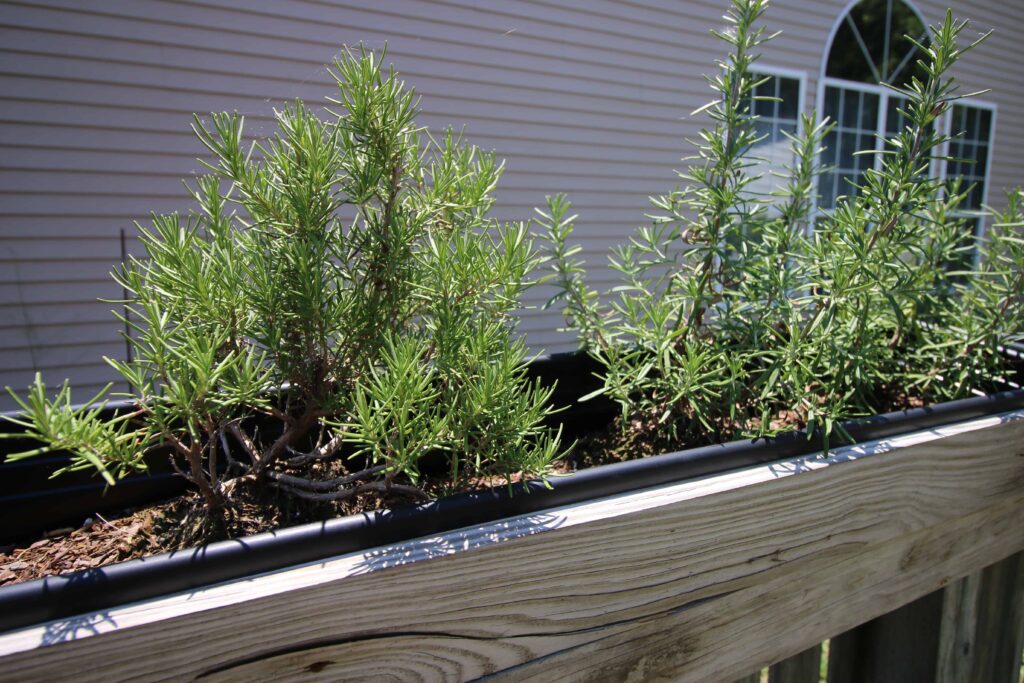
Rosemary (Rosmarinus officinalis)
Toxicity: Non-toxic
Light Requirements: Bright, indirect light
Rosemary features needle-like leaves with a woody aroma. Ensure consistent moisture and provide good drainage.
Sage (Salvia officinalis)
Toxicity: Non-toxic
Light Requirements: Bright, indirect light
Sage has velvety, gray-green leaves with a savory scent. Change the water regularly for optimal growth.
Thyme (Thymus vulgaris)
Toxicity: Non-toxic
Light Requirements: Bright, indirect light
Thyme offers small, aromatic leaves often used in Mediterranean dishes. Trim to maintain a bushy shape.
Scented Geranium (Pelargonium spp.)
Toxicity: Non-toxic
Light Requirements: Bright, indirect light
Scented Geraniums feature fragrant, finely divided leaves with various scents. Change the water to enjoy their delightful aroma.
These indoor houseplants grown in water provide a diverse range of colors, shapes, and scents, making them a wonderful addition to any indoor space. Remember to follow specific care guidelines for each plant to ensure their healthy growth and well-being.
There are definite advantages to growing indoor plants in water. If you are curious, I encourage you to try it out! It can be a fun and low maintenance indoor gardening option.
Any more questions about growing indoor plants in water?
Thanks for reading!


Hey there, I'm Morgan, a houseplant enthusiast from sunny Charleston, South Carolina. Growing up surrounded by my mom's lush orchids and African violets, I discovered the magic of bringing nature indoors. Thanks to the pandemic, I delved deeper into houseplants, discovering their power to uplift moods and transform spaces. I'm here to spill all my secrets, helping you pick the perfect houseplant - and make it happy. Let's keep your plants alive, together! 😊


